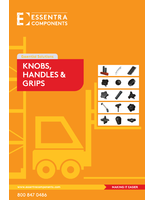Riegl USA Lidar Scanner Plays a Critical Role in Support of Structural Analysis of the I-35W Minnesota Bridge Collapse
Minneapolis, MN--Riegl Lidar scanner LMS-Z420i utilized by the Federal Bureau of Investigation Lab in support of the National Transportation Safety Board to conduct a structural analysis of the collapsed I-35W Bridge in Minneapolis, Minnesota. The I-35W Mississippi River Bridge collapsed on August 1, 2007 at 6:05 pm when the main spans of the bridge collapsed, falling into the river and the surrounding banks. By utilizing Riegl Lidar scanning technology government officials will assist in the analysis of the failure of the bridge. The Riegl LMS-Z420i is a rugged and fully portable sensor designed especially for the rapid acquisition of high-quality three dimensional images. It consists of a high performance, long-range 3D laser scanner in conjunction with a calibrated Nikon digital camera. Laser scanning is quickly emerging as an important and indispensable metrology tool in the area of surveying, engineering and forensics. The FBI uses this important tool for analysis of important segments of the Nations Infrastructure.
3D laser scanning
Terrestrial Laser Scanning is a process that uses a ground based laser device to measure the three-dimensional coordinates of an objects surface. These coordinates are taken in a systematic order at a high rate in real time with an end result being the creation of a point cloud. The term "laser scanning" is not completely descriptive of the technology - the key technology is commonly referred to as "Lidar". Lidar is a type of laser radar technology that determines the distance to an object by measuring the time between the emission of a light pulse and return from the surface of the object. Range is then calculated as a point in 3D space. This type of Lidar is called "pulsed" Lidar technology and is the technology employed by Riegl Laser Measurement Systems.
High Speed Work Flow - Needed for the Nations Infrastructure
The Riegl 3D Scanning System provides a high speed "end to end" solution for civil projects. The system covers the process from data capture in the field to the customer deliverables in an Autodesk or MicroStation (Bentley) formats as well as all accepted data interface standards. Field operation time is 60% to 80% faster than traditional methodologies.
The LMS-Z420i has a horizontal scanning range of 360° and a vertical scanning range of 80° with a measurement rate of 8000 points per second within 6 millimeter accuracy. In order to collect data from a large area, multiple scan positions have to be set up. Surveyors establish control points to register the Lidar scan point clouds into the correct coordinate system. Scan positions are then tied together by finding corresponding control points in each position. A series of photo images are also taken in each scan position by the calibrated NIKON digital camera. The photo images provide more complete detailed information; the calibrated photo images can also be mapped to Lidar spatial data within 1 pixel accuracy. The point cloud is then transformed into a 3D solid model for analysis within CAD and Finite Element analysis software. During post-processing, the Lidar data is combined with the control obtained from Survey Total Station data to bring the point cloud into real-world coordinates. Key points can then be extracted, meshed, and modeled. This is all accomplished in a very short time frame which is critical for the infrastructure of the nation.
America's Infrastructure and Lidar Technology
The collapse of the I -35 Bridge highlights the crumbling infrastructure of America. The roads and highways are at maximum carrying capacity and the related congestion is a public safety hazard of its own. The largest airports in the country are already at maximum capacity. As of 2003, there were about 160,570 bridges deemed structurally deficient or functionally obsolete, according to the American Society of Civil Engineers. The number represented 27.1 percent of the nation's bridges. The American Society of Civil Engineers forecasts that $1.6 trillion is needed to bring the crumbling infrastructure up to current standards. Riegl Lidar Technology is a critical tool for the civil engineer to quickly capture existing conditions of the nation's infrastructure at a speed that not only is remarkable but a requirement for scope of the challenge in front of the nation.
Laser Safety for the Public
The Riegl Laser Scanner meets OSHA regulations for Workplace Safety and ANSI Class 1 eye safe requirements. Riegl's invisible beam will not distract motorists, workers or pedestrians.
About Riegl
Riegl is the global leader in the innovation of Lidar technology for land, marine, and airborne survey. Its 3D scanners provide high accuracy and efficient scanning with Sensor Integration. Portable and rugged Riegl scanners are unrivaled in reliability under demanding environmental conditions. Riegl's 3D terrestrial laser scanning products are founded on the company's 29-year heritage in research, development and manufacture of time-of-flight-based optical radar system.




